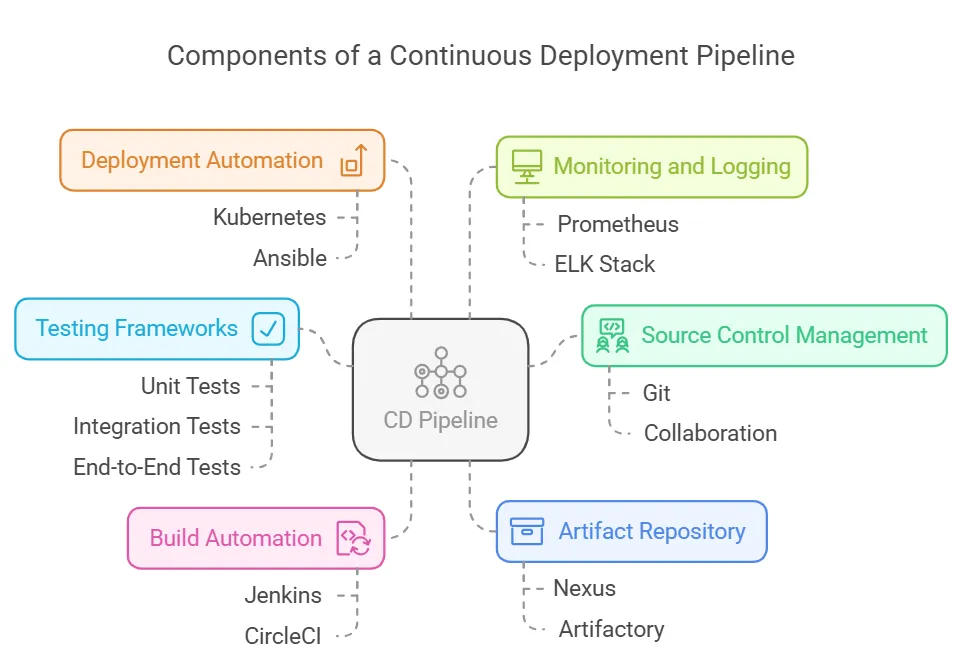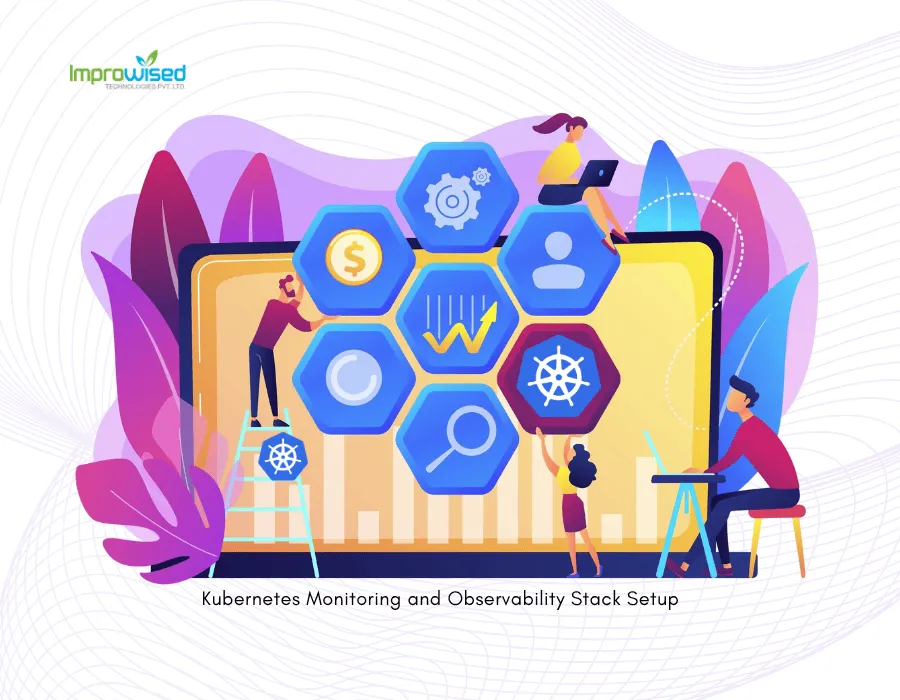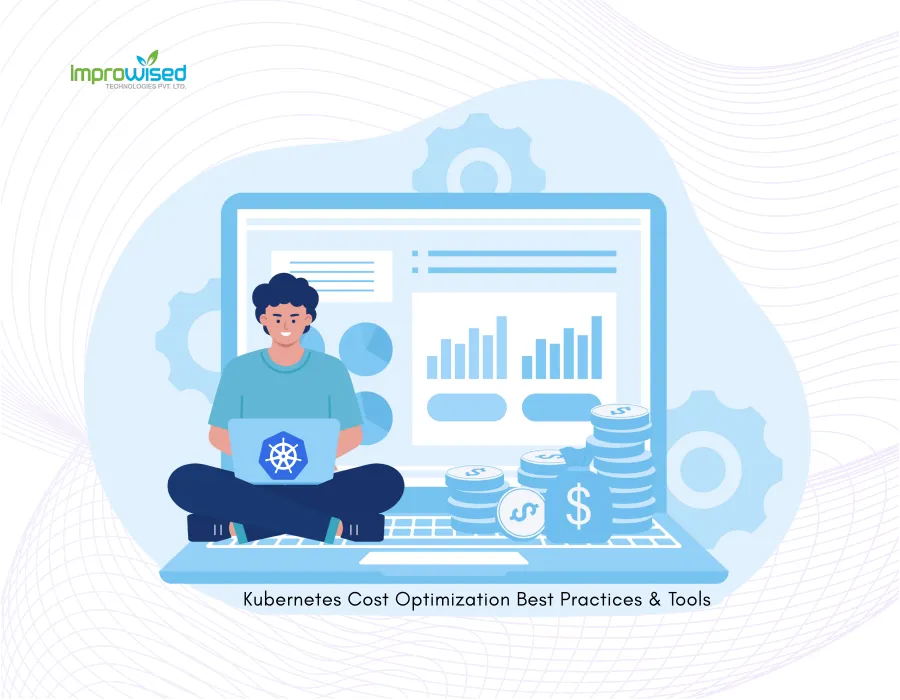February 13, 2025
Why Your CD Pipeline Should Work Like a Swiss Watch (And How to Build One)

By Rakshit Menpara
Improwised Technologies Pvt. Ltd.
Continuous Delivery (CD) pipelines are the backbone of modern software development. They automate the process of building, testing, and deploying code changes, enabling teams to release software frequently and reliably. A well-crafted CD pipeline, much like a Swiss watch, operates with precision, efficiency, and dependability. This article explores the principles behind building such a pipeline and provides a practical guide to its construction.

Understanding the Components of a CD Pipeline
A CD pipeline consists of several stages, each with specific functions that contribute to the overall deployment process. The key components include:
-
Source Control Management (SCM) systems, such as Git, serve as the foundation for version control. They track changes to code and facilitate collaboration among developers. Integrating SCM with the pipeline ensures that every code change triggers the subsequent stages.
-
Build automation tools, such as Jenkins or CircleCI, to compile source code into executable artifacts. This process includes dependency resolution, code compilation, and packaging. A well-defined build process minimizes errors and ensures consistency across environments.
-
Automated testing frameworks, including unit tests, integration tests, and end-to-end tests, validate the functionality of the code. Incorporating a comprehensive suite of tests into the pipeline is essential for identifying issues early in the development cycle.
-
An artifact repository, such as Nexus or Artifactory, stores built artifacts. This component ensures that the correct versions of artifacts are available for deployment, facilitating traceability and rollback capabilities.
-
Deployment automation tools, such as Kubernetes or Ansible, manage the deployment of artifacts to production environments. These tools enable consistent and repeatable deployments, reducing the risk of human error.
-
Monitoring and logging systems, such as Prometheus or ELK Stack, provide insights into application performance and health. Integrating these systems into the pipeline allows for real-time feedback and facilitates rapid response to issues.
Designing the Pipeline
The design of a CD pipeline should prioritize modularity and scalability. Each component must interact efficiently with others while maintaining independence. The following steps outline a structured approach to pipeline design:
Step 1: Define the Workflow
Establish a clear workflow that outlines the sequence of operations from code commit to deployment. This workflow should include:
-
Trigger events (e.g., code commits, pull requests)
-
Build and test stages
-
Deployment strategies (e.g., blue-green deployments, canary releases)
Step 2: Implement Version Control Hooks
Integrate hooks in the SCM to trigger the pipeline upon specific events. For instance, a push to the main branch can initiate the build process. This integration ensures that the pipeline responds promptly to code changes.
Step 3: Configure Build Automation
Set up build automation tools to compile code and run tests. Define build scripts that specify the build environment, dependencies, and commands. Ensure that the build process is reproducible across different environments.
Step 4: Establish Testing Protocols
Incorporate automated testing at various stages of the pipeline. Unit tests should run during the build phase, while integration and end-to-end tests can be executed in a staging environment. This layered testing approach helps catch issues at different levels.
Step 5: Manage Artifacts
Configure an artifact repository to store built artifacts. Implement versioning strategies to ensure that each artifact is traceable. This practice facilitates rollback in case of deployment failures.
Step 6: Automate Deployment
Utilize deployment automation tools to manage the deployment process. Define deployment scripts that specify the target environment and deployment strategy. Automate the rollback process to handle failures gracefully.
Step 7: Integrate Monitoring and Logging
Incorporate monitoring and logging systems to track application performance and errors. Set up alerts for critical issues to enable rapid response. This integration provides valuable feedback for continuous improvement.
Ensuring Reliability and Precision
To achieve a CD pipeline that operates with the precision of a Swiss watch, several practices should be adopted:
Continuous Integration
Implement continuous integration (CI) practices to ensure that code changes are integrated into the main branch frequently. This approach reduces integration issues and promotes a stable codebase.
Infrastructure as Code (IaC)
Utilize IaC tools, such as Terraform or CloudFormation, to manage infrastructure. This practice allows for consistent environment provisioning and reduces configuration drift.
Security Integration
Incorporate security practices into the pipeline, often referred to as DevSecOps. Automate security testing and vulnerability scanning to identify potential risks early in the development process.
Documentation
Maintain comprehensive documentation for each component of the pipeline. This documentation should include setup instructions, configuration details, and troubleshooting guides. Clear documentation facilitates knowledge transfer and onboarding of new team members.
Conclusion
A CD pipeline that functions with the precision of a Swiss watch requires meticulous design, implementation, and maintenance. Each component must be carefully integrated to ensure reliability and efficiency. Neglecting any aspect of the pipeline can lead to deployment failures, increased downtime, and diminished trust in the deployment process.
The consequences of a poorly designed CD pipeline extend beyond technical issues; they can impact team morale, customer satisfaction, and overall business performance. Therefore, investing time and resources into building a robust CD pipeline is essential for organizations aiming to deliver high-quality software consistently.


By Improwised Editorial Team
Improwised Technologies
Pvt. Ltd.

October 29, 2025
Top AI App Development Platforms in 2025: How AI Is Transforming the Way Apps Are Built

By Shyam Kapdi
Improwised Technologies
Pvt. Ltd.


By Improwised Editorial Team
Improwised Technologies
Pvt. Ltd.
Optimize Your Cloud. Cut Costs. Accelerate Performance.
Struggling with slow deployments and rising cloud costs?
Our tailored platform engineering solutions enhance efficiency, boost speed, and reduce expenses.
